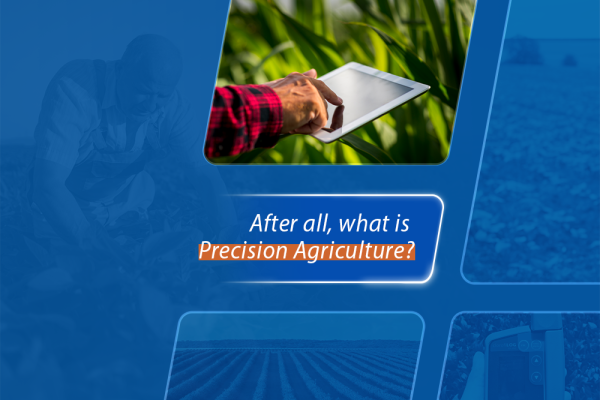Precision agriculture combines techniques for rural production management with the aim of optimizing costs and increasing agricultural productivity.

The agro market is coming around to this “novelty”. Many farm heirs are specializing in agronomy or agricultural engineering at universities and then returning to take over the family business with concepts and technologies of precision agriculture. On the other hand, PA still needs to disseminate more information about its benefits and better prepare farmers and agricultural workers for data-based agriculture.
Therefore, we from Falker prepared this article to help you understand more about precision agriculture. We do not have the pretension to exhaust the subject or even dictate definitions, but rather to serve as a reliable source of information about it.
After all, this is our business and, modesty aside, we from Falker understand precision agriculture.
Here, you will find:
What is precision agriculture?
Definition of precision agriculture
Objectives of precision agriculture
Have a good read!
What is precision agriculture?
Many people think that precision agriculture is about putting GPS on machines, or drones flying over crops to take pictures and thereby discover if the plants are developing well.
It turns out that simply using GPS on agricultural machinery does not provide any precise data about the crop beyond the exact location of the equipment. Also, simple aerial photography done by cell phones attached to drones only serves as an extension of the producer’s eyes, but from a top-down perspective.
A parenthesis here: there is a use of drones in precision agriculture to take photographs with NDVI - Normalized Difference Vegetation Index - cameras. This can be considered precision agriculture because it provides pertinent information for agronomic decision-making. However, it is only a part of a broader concept and process, but we will discuss this in more detail in another article.
Another big myth is believing that just collecting data using precision agriculture equipment throughout different crop phases will automatically provide ready answers about the management to be applied. The truth is that the collected data requires interpretation by a qualified professional to then decide the correct management.
So, having clarified what precision agriculture is not, let’s now define what it is. But first, a historical context on PA.
Definition of precision agriculture
According to the Lexicon dictionary, the word “precision” means “the characteristic of what is precise”. Its synonyms include terms like “correct”, “certainty”, “correctness”, and “exactness”.
By this definition, we can assume that precision agriculture aims to establish greater assertiveness and exactness in agricultural practice.
But it is not that simplistic: we need to delve a little deeper into this definition when discussing greater accuracy by precision agriculture. So, let’s bring some official definitions.
According to a document from the Ministry of Agriculture on the first page of Google when searching for the concept, precision agriculture is “an agricultural management system based on spatial and temporal variation of the production unit and aims to increase economic returns and sustainability and minimizing environmental impact.”.
This concept was developed by the Brazilian Commission of Precision Agriculture, an advisory and proactive body linked to the Ministry of Agriculture. It has the participation of the main representatives of the precision agriculture sector in the country and aims to strengthen the set of actions between the areas of research, teaching, and technology development focused on PA.
It is noteworthy that both definitions include expressions such as “agricultural management”, “spatial and temporal variation”, and have as their ends economic return, profitability, efficiency, or productivity.
Objectives of precision agriculture
Given the official concepts about what precision agriculture is, it is important to be clear that PA aims to improve crop management by considering that they are not uniform and using technological tools to achieve the best results in each portion of the farms.
Thus, we can define that the objectives of precision agriculture are guarantee the correct management of plants through information capable of diagnosing the need for possible nutritional corrections to achieve greater assertiveness in the upcoming harvest; enable the most precise harvest planning as possible; and achieve the highest profitability per planted hectare by considering variations in the area over time.
However, we need to highlight two different objectives - albeit complementary, not competitors - contained in this definition: for the agronomist engineer, the main purpose of precision agriculture is to seek accurate and geolocated data on the need and possibility of interventions that increase the producer’s productivity and profitability; whereas for the farmer, the principal goal is use the data and the agronomist’s actions to optimize costs, ensure maximum productivity in each farm area by respecting its spatial variations, and then high profitability per planted hectare.
So, with this distinction, we can understand the central role of agronomic and agricultural engineers in achieving the proposed objectives, applying precision agriculture techniques, collecting and assessing data, diagnosing potential problems, and carrying out the most appropriate management to guarantee the plants’ health.
Now that you understand a little more about what precision agriculture is, visit our website and check everything Falker can do for your business.






